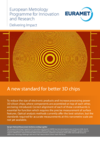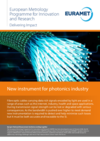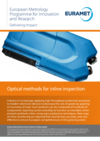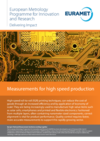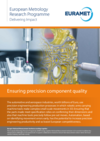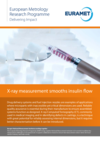Please type a search term (at least two characters)
Case Studies: Supporting light-based and X-ray technology innovation in manufacturing
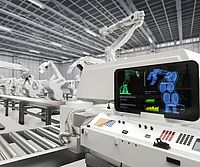
As industrial automation advances, enhancing the competiveness of European industries worth billions of euros requires innovation. From controlling and monitoring movements of robotic machine tools making intricate parts to determining the quality of finished products, light has the potential to revolutionise manufacturing processes. To accelerate these innovations, new ways to monitor and correct manufacturing procedures using inline measurements with instantaneous feedback for adjustments are needed. Light-based and X-ray technologies could provide the tools needed to make this change. Interferometry, a lab-based measurement technique using light, has great potential for applications in diverse industrial settings from manufacturing miniscule electronic circuits to the precision positioning of aircraft wings. However, research is needed to make this highly accurate technique available to industrial users. Increasing the quality of European products and generating new on-machine or in-line measurement capabilities will enhance the competiveness of many highly regarded European industries.
A new standard for better 3D chips
To reduce the size of electronic products and increase processing power 3D silicon chips, where components are assembled on top of each other, are being introduced. Correct alignment of each of these constituents is essential for function which requires the precise measurement of surface features. Optical analysis methods currently offer the best solution, but the standards required for accurate measurements at this nanometre scale are not yet available.
New instrument for photonics industry
Fibre optic cables carrying data rich signals encoded by light are used in a range of areas such as the internet, industry, health and space applications. During transmission signal strength can be lost or degraded with serious consequences. As the bandwidth is pushed ever higher to meet demand new instrumentation is required to detect and help minimise such losses
but it must be both accurate and traceable to the SI.
Optical methods for inline inspection
Industry is increasingly applying high-throughput production processes to modern electronic devices to decrease the cost of goods by applying an ‘economy of scale’. Such products can be composed of hundreds of components requiring correct assembly to function as intended, which presents problems when using mass production techniques. New ways of inline monitoring are required that must be fast, accurate, and costeffective to ensure European competitiveness in this growing sector.
Measurements for high speed production
High-speed roll-to-roll (R2R) printing techniques, can reduce the cost of goods through an increased efficiency and by application of ‘economy of scale’. They are being increasingly used to manufacture high value items such as solar cells, smartphones and printed and flexible electronics. Fashioned from multiple layers, often containing nanometer sized components, correct alignment is vital for product performance. Quality control requires faster, more accurate measurements to support this rapidly growing sector.
PRECISION POSITIONING FOR ELECTRONICS
Europe is aiming to capture 20% of the global silicon wafer production market, with an estimated value of 11.5 billion euro by 2025. To do so, it needs to develop innovative manufacturing techniques for producing the next generation of larger silicon wafers with increased numbers of electronic circuits. Efficient production methods are needed to boost EU manufacturing productivity and create low cost electronics.
ENSURING PRECISION COMPONENT QUALITY
The automotive and aerospace industries, worth billions of Euro, use precision engineering production processes in which robotic arms carrying machine tools make complex small-scale movements in 3D. Ensuring that the parts made meet specification relies on confirming their dimensions and also that machine tools precisely follow pre-set moves. Automation, based on identifying movement errors early, has the potential to increase precision engineering productivity and so boost European competitiveness.
MEASURING LENS IMPLANTS ACCURATELY
Reducing micropart size allows new functionality in smaller spaces, but confirming the accuracy of tiny dimensions is extremely challenging. Often simple shapes are used to calibrate instruments measuring miniscule features, increasing the match between these shapes and the real measurement would improve accuracy. One area where this is critical is for instruments used to measure the eyes corneal curvature to aid lens implant selection during sight restoration after cataract surgery.
X-RAY MEASUREMENT SMOOTHS INSULIN FLOW
Drug delivery systems and fuel injection nozzles are examples of applications where microparts with inaccessible yet critical dimensions are used. Reliable quality assurance is essential during their manufacture to ensure assembled systems function as designed. X-ray Computed Tomography (CT), commonly used in medical imaging and in weld defect analysis, is a technique with great potential for reliably assessing internal dimensions, but it requires better characterisation before it can be introduced.
Download the full case study

